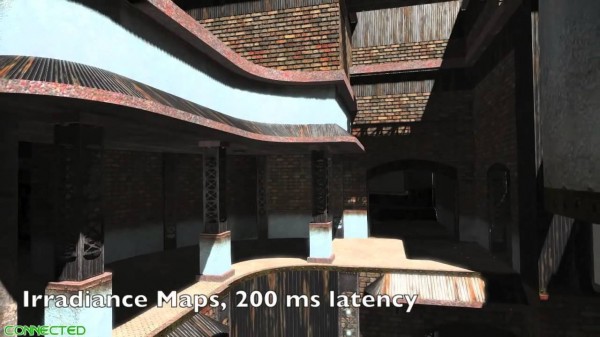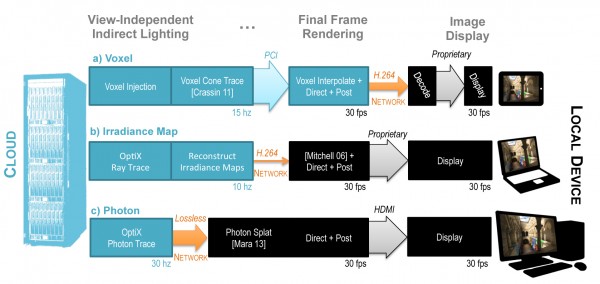
The Cloud is the future… we’ve been hearing that for a while now with both Microsoft and Sony pushing its utilisation for next-gen. Now, Nvidia has revealed its CloudLight tech, enabling lighting rendering and computing for games using the power of the Cloud.
Details can be extracted from a technical report released by the company, but quite honestly, my brain is too puny to be able to comprehend how it all works. The diagram below shows the process from the Cloud to your display in a more simplified manner, although you can read through the report if you have the patience, understanding and/or interest that doing so would require. In summary, however;
We introduce CloudLight, a system for computing indirect lighting in the Cloud to support real-time rendering for interactive 3D applications on a user’s local device. CloudLight maps the traditional graphics pipeline onto a distributed system. That differs from a single-machine renderer in three fundamental ways.
First, the mapping introduces potential asymmetry between computational resources available at the Cloud and local device sides of the pipeline. Second, compared to a hardware memory bus, the network introduces relatively large latency and low bandwidth between certain pipeline stages. Third, for multi-user virtual environments, a Cloud solution can amortize expensive global illumination costs across users.Our new CloudLight framework explores tradeoffs in different partitions of the global illumination workload between Cloud and local devices, with an eye to how available network and computational power influence design decisions and image quality. We describe the tradeoffs and characteristics of mapping three known lighting algorithms to our system and demonstrate scaling for up to 50 simultaneous CloudLight users.
Basically, this should be a cheaper solution for developers and take some of the strain off of hardware. Check out the 5-minute tech demo video embedded below for a look at its handy work.


